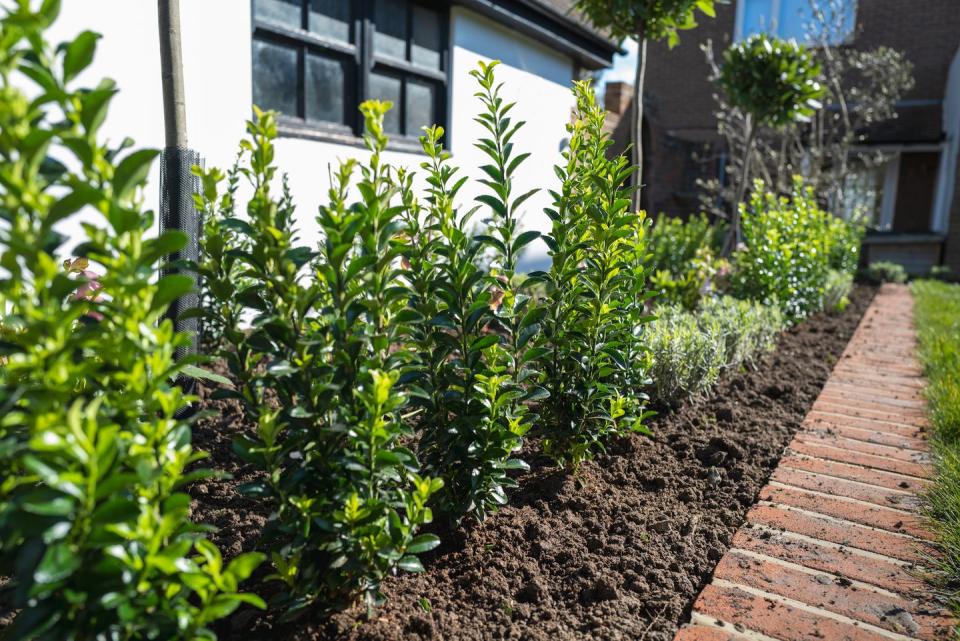How to Kill Weeds in Your Garden and Lawn Without Chemicals
Every year, it’s inevitable that you’ll find plenty of weeds in your yard. They pop up along your driveway or lodged between the patio and sidewalk cracks. You might've wondered about ways to kill weeds that will actually work. If you’re looking for a DIY solution to avoid using chemicals, check out these smart options to keep weeds at bay.
While there’s no magical fix or one-size-fits-all answer to how to kill weeds in your garden, there are several ways to take charge—or at least not be overrun! If you’re worried about spraying chemicals, there are “cultural” techniques that can help keep down the weed count and improve your lawn’s overall health and appearance.
The key is that you have to be consistent with anything you do in lawns, garden beds, or along walks. Otherwise, you’ll have good intentions in May, but by July, you’re overwhelmed by weeds that have reproduced with a vengeance! Weeds typically are easier to kill when they’re young: The older and bigger they are, the tougher they are to eradicate. So, you really can’t let down your defenses. For most gardeners, using several different methods together will help you stay on top of your weeds getting out of control.
Here’s what to do to kill all those unsightly weeds that are getting on your nerves. (PS: Check out these top gardening tools and best gardening gloves for all your big yard projects.)

Mow at the right height.
“Mowing your grass within the recommended height for the species and your region gives the grass the opportunity to improve density and rooting depth,” says Clint Waltz, PhD, extension turfgrass specialist at the Turfgrass Research & Education Center at the University of Georgia. “Grass that’s growing at its best is more competitive with weeds for light, water, space and nutrients.” In a nutshell, thick grass crowds out weeds. Check with your local university coop extension service (find yours here) to learn the correct mowing height for your area and grass type. If you don’t know what kind of grass you have, they can help you identify it, too.
Use mulch.
Mulch reduces the number of weeds that pop up in the first place, retains moisture so you may be able to water less, and improves organic matter in your soil. Apply two to three inches of mulch such as bark, wood chips, or pine straw around trees and shrubs, perennials, and even on plants in containers. Just don’t pile it up directly against the plant to create a “mulch volcano.” That invites moisture, decay, and insects! Keep it a few inches away from trunks and stems. Mulch also makes it easier to pull out any weeds that do manage to sprout.

Dig the weeds up.
It may take a little elbow grease, but digging up weeds to remove the roots (or as much of them as possible) is a non-chemical way to stop them in their tracks. Get them before they flower or go to seed because some varieties can produce tens of thousands of seeds, creating a nightmare for years.
Be cautious with DIY weed remedies.
Homemade doesn’t exactly mean something is safe. For example, some mixtures can be downright dangerous, such as those that include borax, which is toxic to pets. Other ingredients often used in DIY fertilizing solutions, such as Epsom salts, contain magnesium and sulfate. So, will Epsom salt kill weeds? Probably not so much; it’s more likely to help them green up! Lemon juice? You’re probably better off making lemonade!
While you may see a response with some DIY concoctions, it’s temporary. It may appear that you’ve killed the weeds, but the sad truth is that they’ll likely come back within 7 to 10 days. The reason? Homemade products have only a topical effect and are not absorbed systematically by weeds so they don’t kill the roots, says Waltz.
Give horticultural vinegar a try.
In 2002, the USDA researched weed control using vinegar. Annual weeds such as foxtail, pigweed, and lamb's quarters were 80% controlled with horticultural vinegar, which isn’t the stuff that’s sitting around in your pantry (for reference, household vinegar is about 5 percent acetic acid; horticultural vinegar is around 20 percent). Horticultural vinegar worked best on small annual weeds that had germinated in the past two weeks. Unfortunately, it wasn't effective on perennial weeds such as Canada thistle.
If you do choose to give horticultural vinegar a try, wear gloves and handle with care. After all, it is an acid that can cause skin irritation and eye injury. Because it’s also a contact herbicide, which means it doesn’t move into the weeds’ roots, you’ll need to reapply in a week or two.
Finally, it's important to note that horticultural vinegar kills whatever it touches! So, use carefully around the plants or grass you do want. It also washes off in rain, so time your applications for a hot, sunny day to get the most bang for your buck.
Boil some water.
Pouring boiling water on weeds can knock them down temporarily. However, it can also scald the soil, potentially killing any beneficial microorganisms too, says Waltz. And it’s not the easiest task to perform without burning yourself! If you want to try it, stick with weeds in gravel beds or pavement cracks so you don’t splash other plants.

Use edging.
To keep weeds from creeping into planting beds, use a physical edge as a simple, non-chemical barrier. Many last a long time—if not forever—depending on the material. You’ll have to invest some sweat equity installing it (count on at least a half day or more), but you’ll have it for years. Long-term solutions include recycled bricks or paver stones that you lay in a shallow trench, or no-dig metal which you hammer into the ground. Plastic is another option, though it can be difficult to install if you’re using the long rolls. Another thrifty option is to create a shovel edge using a spade to cut the grass away and create a sharp, neat border.
Plant groundcovers.
Ground-hugging plants such as junipers, Siberian cypress, creeping thyme, and ajuga can crowd out weeds so there’s no place for them to sprout. They also keep soil in place to protect against erosion, add interest and color to your planting beds, and attract pollinators. Don’t forget that the planting area must be free of weeds before planting groundcovers, so pull on your gardening gloves!

